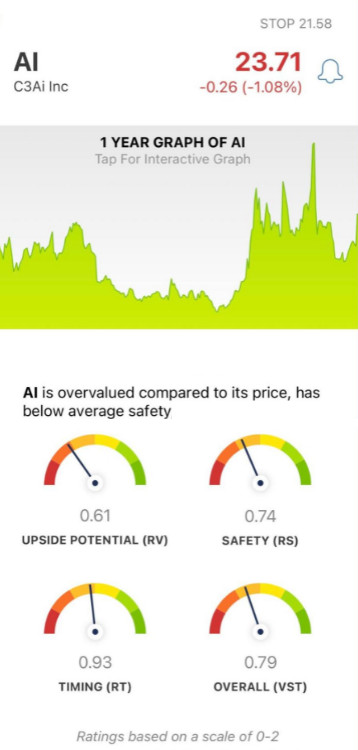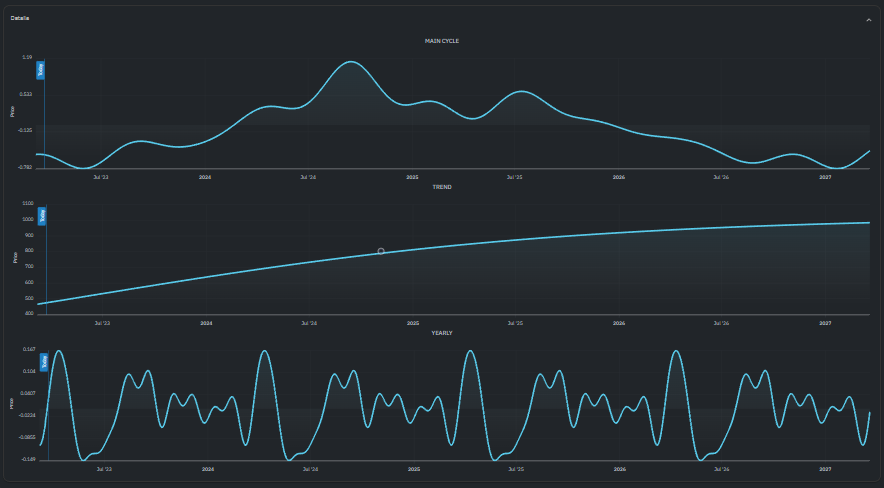Top 10 Ways To Evaluate The Security And Security Of Ai Trading Platforms
When using AI-based trading platforms to predict and analyze the price of stock privacy and security are essential. These platforms typically deal with sensitive personal and financial information. Data breaches or mishandling could lead to financial and reputational losses. Here are 10 top tips to assess the privacy and security of these websites.
1. Think about Data Encryption
Transmitting encrypted data: Ensure that the platform uses secure protocols (e.g., TLS/SSL) to protect data that is transmitted between your device and the servers.
In-rest encryption: Check that sensitive data stored on platforms servers are encrypted with the help of strong encryption standards.
Check for end-toend security It is essential for anyone who wants to safeguard sensitive information or communications.
2. Test Authentication Measures
Two-factor authentication (also called copyright) is a fantastic method of increasing security.
Biometric authentication: Find out whether the app supports biometric login options (e.g. fingerprint, facial recognition, etc.)) for mobile apps.
Password policies – Check that the platform has strict policies regarding passwords (e.g. length requirements and complexity requirements).
3. Verify Compliance
Financial regulations: Make sure your platform is in compliance with applicable financial regulations (e.g., SEC, FINRA, MiFID II).
Data privacy laws: Make sure you comply with any data privacy laws that apply to your business in the event that they are applicable (e.g. CCPA or GDPR).
Audit certifications – Verify to see if the system is certified or has received third party security audits (e.g. SOC 2, ISO 27001).
4. Review Controls for Access to Data
Role-based Access: Make sure the platform is using control based on role (RBAC) in order to restrict data access to authorized users.
Permission levels: Check to determine if different members or users of a team may have different permissions.
Activity monitoring: Check if the platform logs and monitors the user’s activity to identify suspicious behaviour.
5. Assess Vulnerability and Management
Regular updates: Make sure the platform is regularly updating its software to fix weaknesses.
Penetration testing : Check to find out if your platform is being tested regularly to help it discover and fix security vulnerabilities.
Bug bounty programs: Check if there is a bug-bounty program that is available to motivate security researchers from outside to share security vulnerabilities.
6. Evaluate Data Privacy Policies
Transparency Privacy Policies: Read the privacy guidelines on the website to learn the ways in which your information will be used, collected and shared.
Data minimization – Ensure that the platform collects only the data it needs for its operation.
Data sharing with third parties: Verify whether the platform is prepared to share your information with a third-party and If so in the process of sharing, what.
7. Check for Secure API Use
API security: Make sure the platform’s API has authenticated methods that are secure (e.g., OAuth, API keys) and encrypts data exchanges.
Rate limit: Make sure to check for rate limitations within the API to stop brutal force attacks or abuse.
Access logs: Determine whether the platform records API access and usage to allow monitoring and auditing.
8. Assess Incident Response and Recovery
Incident response plan: Make sure the platform has a clear incident response plan to handle security or data breaches.
Read the policies of the platform for notifications.
Data backups: Check if the platform regularly backs up data and has a disaster recovery plan in place.
9. Review Physical Security Measures
Data center Security: Ensure that servers are located in secure data centers with physical security measures (e.g. monitoring, access control).
Redundancy – Make sure that your platform is outfitted with redundant systems in order to ensure data availability when hardware fails.
Verify the geographical distribution of the data to ensure resilience.
10. Test Privacy Controls for Users
Data deletion – Make sure that you erase all personal data permanently from the platform when you decide to stop using the platform’s services.
Privacy settings: Check if you have privacy settings that let you control the data shared and visible.
Check to see if anonymization is being performed on data that is used in machine learning or analytics.
Bonus Tips
Reputation and reviews from users Read user feedback and reviews to determine the platform’s track of security and privacy.
Trial period: Take advantage of a free trial or demo to test the security features and privacy settings.
Customer support: Verify that the platform provides robust customer service for any security-related concerns or issues.
These tips will help you evaluate the privacy and security of AI trading platforms that forecast or analyze stock prices. Your financial and personal information will be safe. A secure platform safeguards your assets and builds confidence in its service. View the top trading chart ai for blog examples including ai trader, best ai stock trading bot free, best stock analysis website, best ai trading software, best ai trading software, free ai trading bot, ai investing, best ai stock, ai for trading, trader ai app and more.

Top 10 Tips For Evaluating The Regulatory Compliance Of Ai Stock-Predicting/Analyzing Trading Platforms
Regulation compliance is a key element to evaluate trading platforms that use AI. Compliance ensures that the platform works within the legal frameworks, safeguards user data, and adheres to the financial laws, which reduces the possibility of legal problems or financial sanctions. Here are 10 best strategies to determine the regulatory compliance on these platforms.
1. Verify the Licensing & Registration
Regulators: Make sure the platform is registered with and licensed by relevant financial regulatory authorities (e.g., SEC in the U.S., FCA in the UK, ASIC in Australia).
Verify partnerships with brokers. If the platform is integrated with brokers, be sure that they are licensed and monitored.
Public records: Go to the regulator’s site to find out whether the platform is registered or has ever violated the law.
2. Check for Data Privacy Compliance
GDPR: If operating within or serving users from the EU, ensure the platform meets the requirements of the General Data Protection Regulation (GDPR).
CCPA — California Consumer Privacy Act: Verify compliance for California users.
Data handling policies: Read the privacy policies for data on the platform to find out the way it describes the data collection, storage and sharing.
3. Evaluation of Anti-Money Laundering Measures
AML Policies The platform should be equipped with robust AML (Anti-Money Laundering) policies to detect money laundering and prevent it.
KYC procedures: Check if the platform follows Know Your Customer (KYC) procedures for verifying user identities.
Examine the platform’s monitoring of transactions. Does it keep track of transactions and report suspicious activity to the authorities?
4. Check for your compliance with Trading Regulations
Market manipulation: Make sure that the platform is equipped with measures to protect against market manipulation for example, spoofing or washing trading.
Order types: Verify if the platform meets rules regarding types of orders (e.g., no illegal stop-loss hunting).
Best execution: Check if the platform adheres to best execution practices, ensuring trades are executed at the highest price available.
5. Cybersecurity Compliance:
Data encryption: Make sure that the platform protects the user’s data while it is in transit and when it is in rest by encrypting it.
Response to incidents. Verify whether the platform has a strategy for dealing with cybersecurity breaches and data breaches.
Certifications – Check to see whether your platform is certified. cybersecurity certifications.
6. Transparency Disclosure, Transparency and Evaluation
Fee disclosure: Ensure the platform clearly discloses any fees, any hidden or additional charges.
Risk disclosure – Make sure that the platform provides clear information on risk. This is particularly important for trading strategies with high leverage or risks.
Performance reporting: Determine whether the platform is clear and accurate reports on performance on its AI models.
7. Make sure you’re in conformity with international regulations.
Cross-border trading: If you want to trade internationally make sure your platform is legal in all countries.
Tax reporting: Find out whether the platform offers tools or reports that can help users comply with tax laws (e.g., FIFO rules in the U.S.).
Conformity with international sanctions: Ensure that your platform is in strict compliance with these rules and does not allow transactions between countries or entities that are banned.
8. Examine Record-Keeping and Audit Trails,
Transaction records: Ensure that your platform has detailed records of every transaction, both for reasons of auditing and regulatory purposes.
User activity logs (logs): Check to see if the platform tracks the activities of users, such as logins and trades. Also, check if the settings for your account have been changed.
Audit readiness: Check if the platform can provide necessary documentation and logs in case an audit by a regulatory agency.
9. Check for compliance with AI Specific Regulations
Algorithmic trading rules If the platform for trading uses algorithms, ensure that it complies with the regulations of MiFID II for Europe or Reg. SCI for the U.S.
Fairness and Integrity: Determine whether the platform’s AI models are monitored and controlled to prevent bias.
Explainability: In accordance with certain regulations, the AI platform should provide clear explanations of AI-driven decisions and predictions.
Review User Feedback and Regulatory History
User reviews: Use feedback from users to evaluate the platform’s compliance with regulations.
History of regulation: Determine if the platform has any records of violations to the law, fines, or penalties.
Third-party auditors: Check if the platform is audited regularly by a third party to ensure it’s adhering to the rules.
Bonus Tips:
Legal consultation: Discuss with an expert in law on the conformity of the platform to applicable rules.
Trial period for free: You may use a demo or free trial to try out the features that ensure compliance of the platform and its documentation.
Customer support – Check that the platform is able to assist with any compliance-related questions or issues.
Use these guidelines to assess the compliance with regulations and protect of your rights. Compliance is crucial since it not only reduces the risk of legal liability, but also builds trust and confidence for the platform. Read the top using ai to trade stocks recommendations for website examples including best ai stock trading bot free, best ai trading software, ai for investing, ai stock trading app, ai trader, chart analysis ai, best ai etf, copyright ai trading bot, ai stock trading app, trader ai intal and more.
